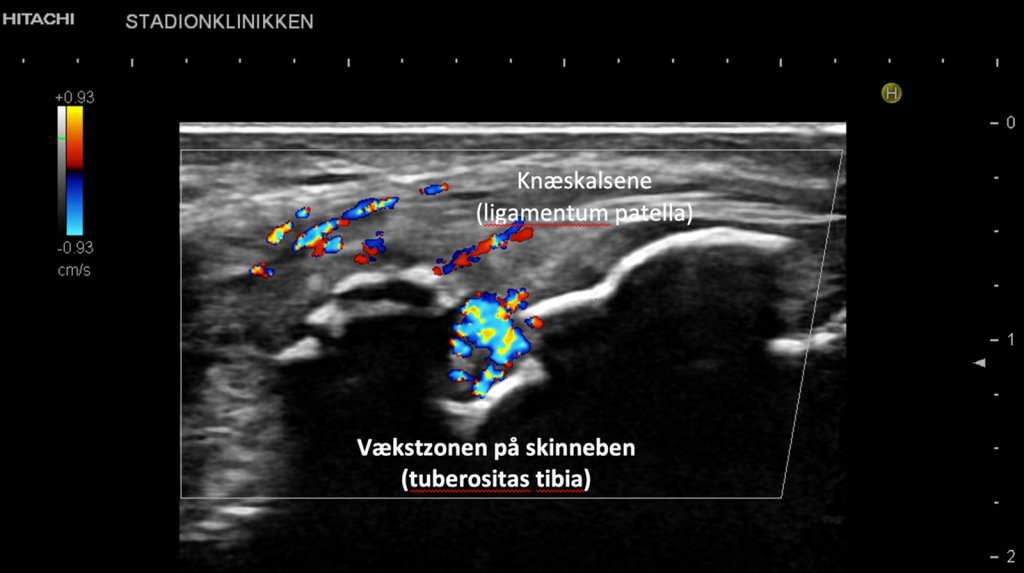Apophysitis is a very common problem in growing children and adolescents, where the muscle and tendon attachments on the growth zones trigger pain if overloaded.
Diagnosis is usually easy and is often made by clinical examination alone. If there is nocturnal pain or if the pain is sudden like a ‘tear’, an X-ray should be performed.
Ultrasound scans of congested growth zones show irregularity of the bones of the growth zone and increased blood vessel growth (the colours) as a sign of inflammation.
Here is an ultrasound scan of Osgood-Schlatter (overload of the patellar tendon attachment on the tibia (Tuberositas Tibia)

Apophysitis almost always heals without sequelae. The prognosis is therefore good, but can be long-lasting if the overuse symptoms are not addressed as soon as they are noticed. Quick relief from pain-inducing activities can significantly reduce the course of the injury. However, if the young athlete continues until the pain becomes so severe that sport is impossible, it can take six months to a year before the pain subsides and sporting activity can be resumed.
Unlike adult athletes, the treatment for apophysitis is primarily relief and not strength training, as the apophyses cannot be trained stronger.
It is important that the young athlete continues with activities that do not cause pain during or (the day) after the activity, such as technical training. These activities are best done with training mates, as prolonged absence from training sessions can have a significant social impact. In rare cases, the growth zone can be torn off, but it can then be surgically repaired, which usually heals quickly so that sporting activity can continue.
